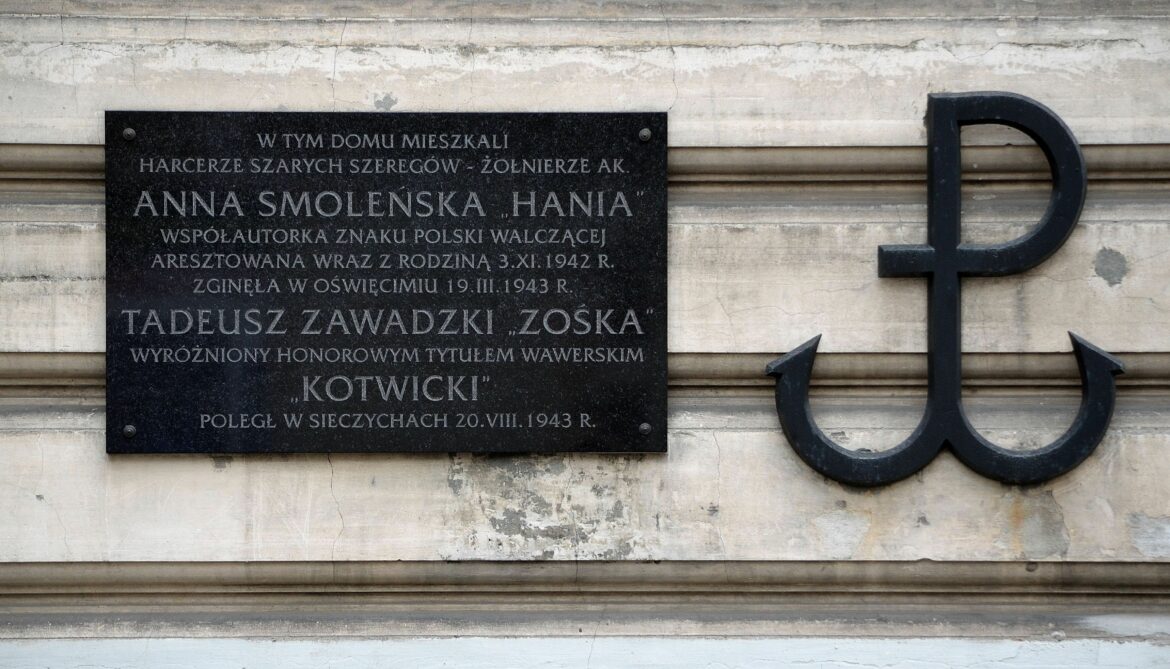In the early spring of 1942, the Home Army Headquarters in Warsaw announced a competition for a symbol that was to visibly attest that neither Poland nor the Poles would surrender to the German occupier. The symbol had to have a patriotic meaning and a simple message that was understandable to everyone, which is why an uncomplicated graphic form was preferred. The winning design was the ‘Anchor’, a combination of the letters ‘P’ for Poland and ‘W’. The latter referred to the word ‘struggle’. The sign was proposed by Anna Smoleńska – a pre-war student of art history, who was probably inspired by the spontaneously appearing anchor sign that had already appeared here and there before.
When representatives of the Polish Underground State approved the new anchor sign, it became more popular than the tortoise, which was a year older and also appeared on the walls of occupied cities as part of the so-called small sabotage. Its meaning, however, was different. The tortoise urged the Polish population to work slowly to make it more difficult for the Germans to administer the General Government. The anchor was painted on the walls with hardly washable paint, but it also appeared on bus stops and notice boards.
Anna Smoleńska, pseudonym ‘Hanna’, was born in 1920 in Warsaw. During the war she became a scout in the Grey Ranks. She came from a family of professors. She was the daughter of Kazimierz Smoleński, a professor of chemistry at the Warsaw University of Technology.
From the beginning of the German occupation Smolenska was heavily involved in the youth underground. She completed a communications course and took part in the action of the Organization of Small Sabotage “Wawer”. Thanks to her skills, she became a liaison officer in the Current Propaganda Department of the Information and Propaganda Bureau (BIP) of the Main Headquarters of the Union of Armed Struggle – Home Army.
She was also a liaison officer for Maria Straszewska – the secretary of the editorial board of the “Information Bulletin”. Unfortunately, after an unsuccessful attempt to arrest the editor-in-chief of that magazine, as a result of a “slip-up”, the Gestapo arrested Smoleńska together with her parents, sister, her brother and his wife on 3 November 1942. After being incarcerated at the Pawiak prison, despite a tough investigation, she did not denounce anyone. She was therefore deported to Auschwitz concentration camp, where she was given the camp number 26008. She died of typhus. Three members of her family also died in the camp. Her father, after a tough investigation, was shot by the Gestapo in the ruins of the Warsaw Ghetto in May 1943.
The only member of the family who survived the war was Anna’s older brother Stanislaw, a Polish Radio employee before and after the war.





